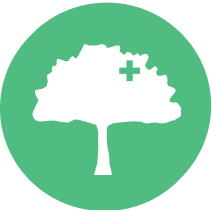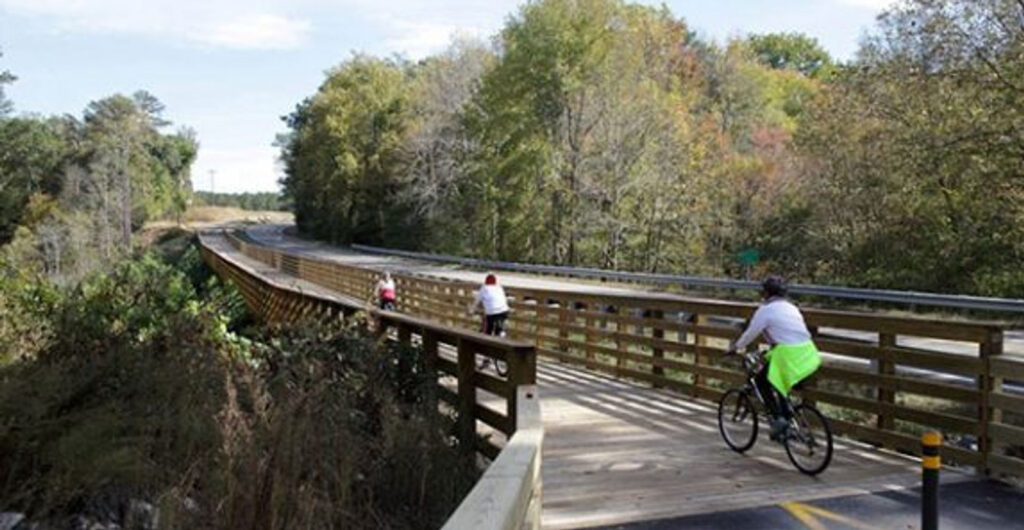Fall Line Packs Big Potential
From health, to safety, to economic impact and more, there are plenty of reasons to fall in love with the Fall Line.

Physical Health
Trails foster a variety of recreational activities that enhance physical health and reduce the risk of chronic conditions by promoting regular exercise such as walking, running, biking, or wheeling.

Mental Health
Spending time on trails in natural environments alleviates stress, anxiety, and improves focus, fostering pro-social connections within the community at no cost.

Safety
Offering the safest infrastructure for active transportation, trails encourage even the hesitant to try out biking, walking, or rolling, providing an unmatched level of safety and confidence amid rising road user fatalities.

Open Space & Habitat Conservation
Trails contribute to habitat conservation and ecological health through the creation of urban green spaces that combat heat, improve stormwater absorption, and preserve natural areas for future use.

Economic Development
Trails act as catalysts for economic growth by enhancing the quality of life, driving trail-oriented development, attracting tourists, appealing to potential employees, and reducing healthcare costs associated with active lifestyles.

Connectivity
Trails promote access to amenities and varied commuting routes, providing an interconnected transportation network that does not rely on streets, thereby enhancing movement and creating a more equitable transportation system.
CASE STUDIES: TRAIL TRANSFORMATIONS
Multi-use bicycling and walking trails not only provide safe, separated spaces for people to get around or enjoy being active outside, but also can offer profound economic boosts to an area. The Indianapolis Cultural Trail in the heart of Indianapolis’ downtown opened in 2008, and since then the area has experienced over an estimated 11,000 jobs have been created and $1 billion estimated economic impact.

In Minnesota, the Minneapolis Midtown Greenway opened its first segment in 2000 and was fully opened in 2007. It generated at least 11 separate projects (10 of which are residential) between 2004 and 2014, resulting in more than $750 million worth of new housing.

Of course, Virginia has its own example in the Virginia Capital Trail. Since its completion in 2015, the Capital Trail has been a major asset as recreational site for residents, destination point for bicycling tourism, and transportation connector for people actively commuting in and around Richmond. According to its latest economic impact study, the trail generated $8.9 million in economic activity and $5.3 million in value-added effects during the 2018-2019 fiscal year.
Like these transformative trails, the Fall Line not only presents an opportunity for recreation, but also has the potential to connect people to jobs, shopping, colleges, and transit along the corridor. The Fall Line would also become part of the East Coast Greenway alignment, which seeks to connect 15 states from Maine to Florida.
